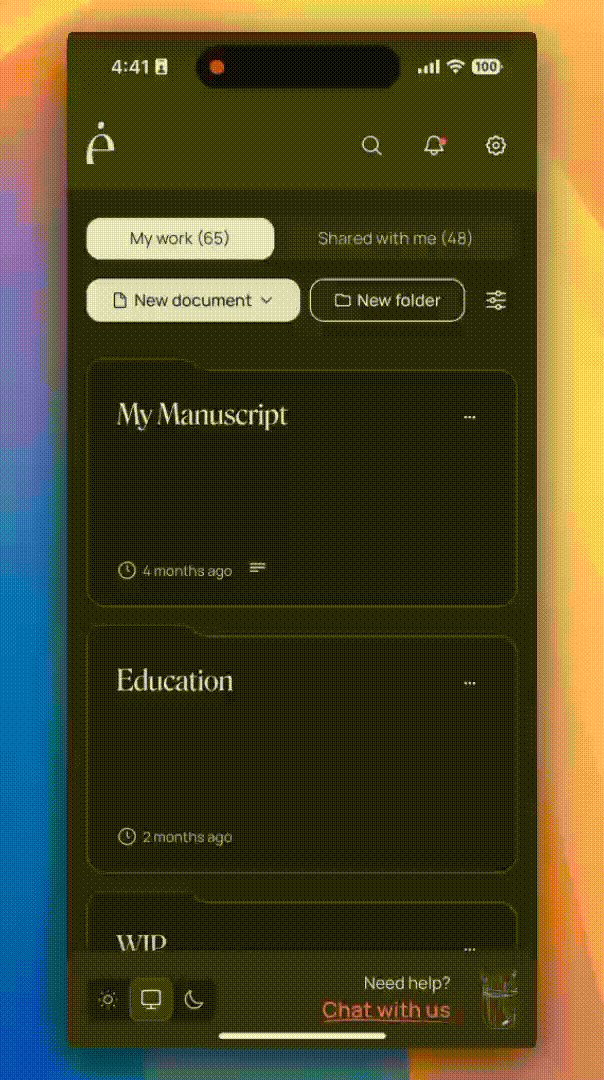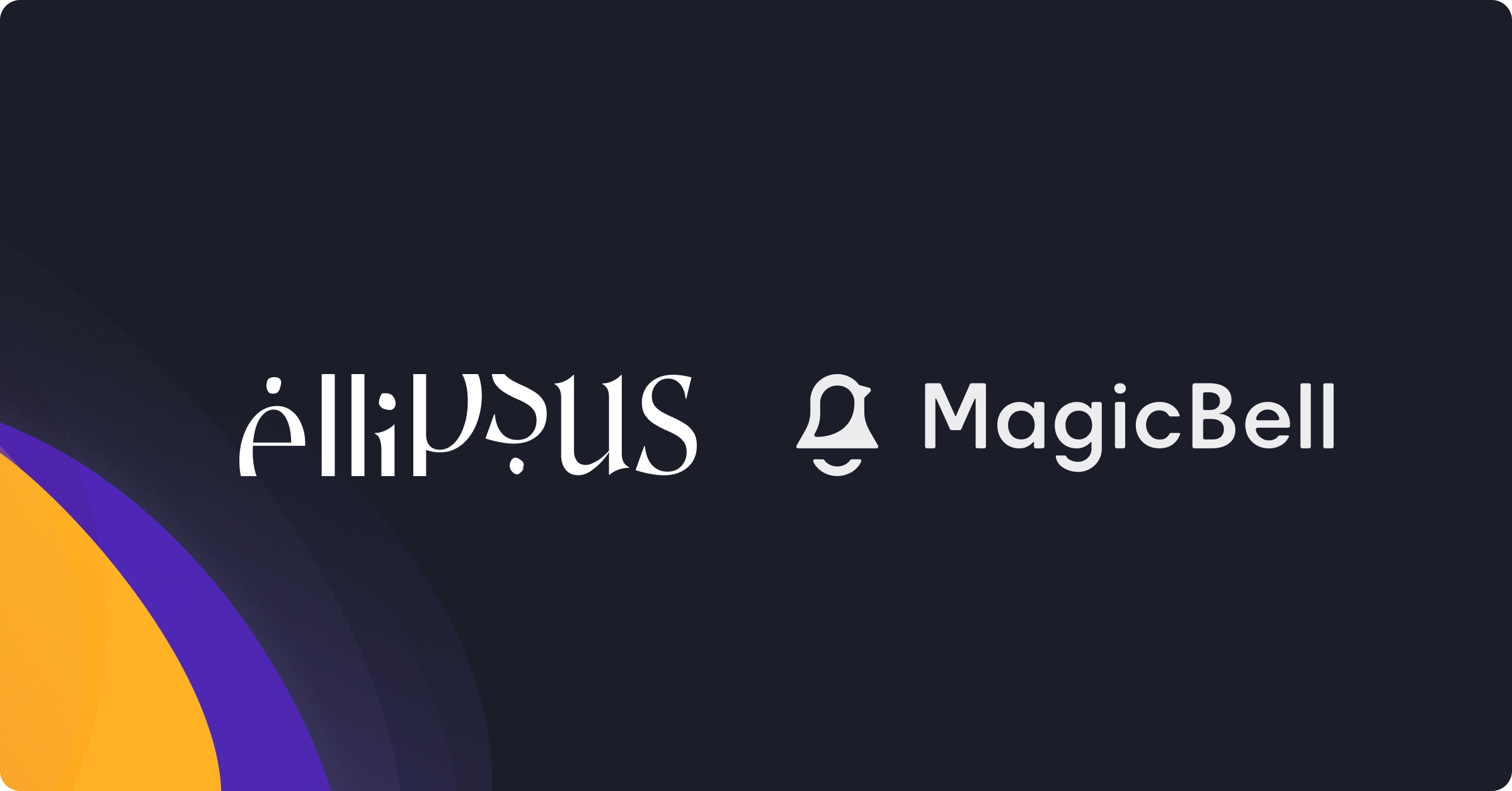Ellipsus is a collaborative writing software built for creative writers to do every part of the creative process, all in one place. The seven-person startup, currently in closed beta, has built the software to support writers in drafting, editing, accepting feedback, and handling version control and revisions in an intuitive way that supports creative exchange.
If a comment is left in a document and there's no way to bring the user’s attention to it, does it matter??
— Kate Donahue, Head of GTM, Ellipsus
How to enable collaboration for a notification-conscious audience
Since notifications are an essential part of collaboration, Ellipsus had basic email-based notifications, even from the beginning. Writers got notified about getting invited to view and comment on documents.
But Ellipsus’s creative audience “is not in love with their inbox”, comments Kate Donahue, Head of GTM. They needed to take a respectful, intentional approach to notifications if they wanted them to drive increased engagement.
Plus, as the product grew, Ellipsis knew writers would be getting more and more notifications — things would get messy, fast.
We knew people were going to work on multiple documents in their dashboard with multiple writers. We needed to give them flexibility about how and when they receive notifications.
— Kate Donahue, Head of GTM, Ellipsus
Ellipsus had a few main goals for their notification strategy:
- Facilitate collaboration without relying solely on email.
- Provide flexibility in notification preferences.
- Scale notification capabilities as the product grew and more features became available.
The team quickly discarded the option of building their own notification system. “That would have been an absolute no go. A notification system is almost a product on its own,” adds Kate.
Factors they considered when evaluating options for notification systems:
- How quick was the set up?
- Do they have a ready-to-use UI library?
- Are there granular user permissions?
- Can it scale with an expanding infrastructure?
And they wanted to work with a team that took them seriously. As a small startup, Ellipsus knows their needs are different from huge enterprise clients, but they still need support.
After looking at several vendors, Ellipsis found that MagicBell met all of their criteria, and they moved on to implementation.
A working prototype in a day, and full implementation in less than a week
The implementation process for integrating MagicBell notifications into the Ellipsus platform was straightforward.
Prototyped in under a day
The prototyping phase was quick, as MagicBell's extensive libraries and the ready-to-use React library allowed them to have a working prototype within a day.
These are the places in the product Ellipsus implemented notifications:
- Invitations to edit a document
- Comments on a document
- Drafts merged into a document
- Role updates — for example, if you’ve been assigned as an editor on a document
Users can opt in or out of notifications by category, so they can choose what they see based on what’s important to them.
Creating custom components using the open source React library
The Ellipsus team took a little extra time to match the notifications to their “very strong design language.” Karol, Product Engineer at Ellipsus, notes that the notifications “look great by default, but our design is very specific to making it look native.”
Since the React library is open source, Karol adds, “Even if I couldn’t extend something out of the box, I was just able to take a look at how they implemented it and create our own components based on that. It was a very friendly developer experience.”
Integrating with existing email notifications
Karol noted how some vendors take over your code base for implementation, or they don’t play well with others. He found that MagicBell integrated nicely with their existing code base, and that “it was actually very easy to integrate.”
The Ping functionality in MagicBell meant that Ellipsus didn’t need to change their existing email provider. “Whenever it’s time to send a notification, MagicBell can ping your customer endpoint to either infer something, send analytics, or send an email. We just ping the same customers as previously.”
Web push notifications allowed for a quality mobile experience, even without a dedicated app
Web push notifications turned out to be surprisingly helpful for mobile usage. Since Ellipsus doesn’t yet have a mobile app, all mobile usage takes place in a browser.
Web push notifications enabled Ellipsus to offer a key native app feature: push notifications sent directly to users’ phones. “Anything that makes it easier for them to collaborate on mobile has an uplift factor — whether it's getting notified, or the ability to see and respond to comments,” explains Kate.
Having push notifications on mobile browsers contributedto high usage on mobile. “We actually have a huge user base on mobile, and session times on mobile are as high as they are on desktop. It’s shocking, because we don’t have a mobile app.”

A 200% increase in comments, now sending 20,000 notifications a month, with the infrastructure ready to scale
Since integrating MagicBell notifications into their platform, comment creation in Ellipsus is up 200%. The user base also grew significantly at the same time, and “it's up-leveled the overall user experience tremendously, and it set us up for a path for scaling the product and improving collaboration amongst the totality of our user base."
Notifications reinforce commenting behavior, and customization makes it easier for users to stay engaged across multiple documents in the way that works best for their workflow and creative flow.
Future notifications that Ellipsus plans to add:
- Digest notifications — daily or weekly summaries of changes to documents
- Notifications for individual writers to track progress, like word count goals or limits
- Analytics
- Comments or reactions from anonymous external readers
Luckily, it’s straightforward to add new types of notifications. Karol says, “If we want to send a new type of notification, it's basically the same as existing notifications. We just add a new category, set the content, and send.”
We look forward to supporting Ellipsus as they continue to add notifications and grow their base of creative writers!
Heavy collaborators amongst our audience get significant benefit from seeing in-the-moment, notifications across a variety of documents and folders. It’s up-leveled the overall user experience tremendously, and it set us up for a path for scaling the product and improving collaboration amongst the totality of our user base.
— Kate Donahue, Head of GTM, Ellipsus
Unlock the full potential of your app with a perfect notification stack.
Here are a few resources that can help you get started:
